 W
WAeroponics is the process of growing plants in an air or mist environment without the use of soil or an aggregate medium. The word "aeroponic" is derived from the Greek meanings of aer and ponos. Aeroponic culture differs from both conventional hydroponics, aquaponics, and in-vitro growing. Unlike hydroponics, which uses a liquid nutrient solution as a growing medium and essential minerals to sustain plant growth, or aquaponics, which uses water and fish waste, aeroponics is conducted without a growing medium. It is sometimes considered a type of hydroponics, since water is used in aeroponics to transmit nutrients.
 W
WAnimal repellents are any things or methods that keep certain animals away from certain objects, areas, people, plants, or other animals. To this end, living organisms emit special semiochemicals naturally; humans purposely make use of some of those and also design other repellents.
 W
WAn aquatic weed harvester, also known as a water mower, mowing boat and weed cutting boat, is an aquatic machine specifically designed for inland watercourse management to cut and harvest underwater weeds, reeds and other aquatic plant life. The action of removing aquatic plant life in such a manner has been referred to as "aquatic harvesting".
 W
WArboriculture is the cultivation, management, and study of individual trees, shrubs, vines, and other perennial woody plants. The science of arboriculture studies how these plants grow and respond to cultural practices and to their environment. The practice of arboriculture includes cultural techniques such as selection, planting, training, fertilization, pest and pathogen control, pruning, shaping, and removal.
 W
WBonsai cultivation and care involves the long-term cultivation of small trees in containers, called bonsai in the Japanese tradition of this art form. Similar practices exist in other Japanese art forms and in other cultures, including saikei (Japanese), penjing (Chinese), and hòn non bộ (Vietnamese). Trees are difficult to cultivate in containers, which restrict root growth, nutrition uptake, and resources for transpiration. In addition to the root constraints of containers, bonsai trunks, branches, and foliage are extensively shaped and manipulated to meet aesthetic goals. Specialized tools and techniques are used to protect the health and vigor of the subject tree. Over time, the artistic manipulation of small trees in containers has led to a number of cultivation and care approaches that successfully meet the practical and the artistic requirements of bonsai and similar traditions.
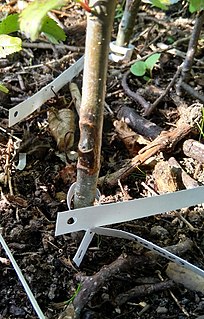 W
WChip budding is a grafting technique.
 W
WContainer gardening or pot gardening/farming is the practice of growing plants, including edible plants, exclusively in containers instead of planting them in the ground. A container in gardening is a small, enclosed and usually portable object used for displaying live flowers or plants. It may take the form of a pot, box, tub, basket, tin, barrel or hanging basket.
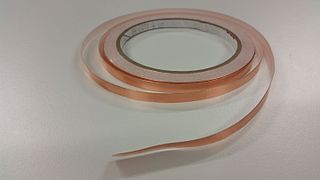 W
WCopper tape refers to a thin strip of copper, often backed with adhesive. Copper tape can be found at most hardware and gardening stores and sometimes electronic stores. Copper tape is used to keep slugs and snails out of certain areas in gardens, potted plants, and trunks of fruit trees, and other trees and shrubs. It is also used for other applications, such as electromagnetic shielding or low-profile surface mount transmission line in electronics and in the production of tiffany lamps. It comes in two forms; conductive adhesive and non-conductive adhesive.
 W
WCoppicing is a traditional method of woodland management which exploits the capacity of many species of trees to put out new shoots from their stump or roots if cut down. In a coppiced wood, which is called a copse, young tree stems are repeatedly cut down to near ground level, resulting in a stool. New growth emerges, and after a number of years, the coppiced tree is harvested, and the cycle begins anew. Pollarding is a similar process carried out at a higher level on the tree. Daisugi is a similar Japanese technique.
 W
WDaisugi (台杉) is a Japanese technique similar to coppicing, used on Cryptomeria (Sugi) trees. The term roughly translates to "platform cedar".
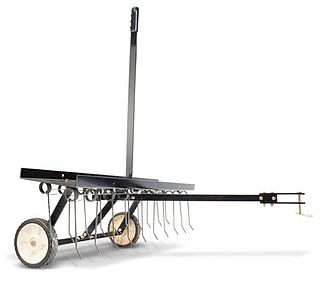 W
WA dethatcher or lawn scarifier is a device that removes thatch from lawns. Types of dethatchers include motorized dethatchers or those that can be pulled behind a garden tractor.
 W
WFruit trees are grown in a variety of shapes, sometimes to please the eye but mainly to encourage fruit production. The form or shape of fruit trees can be manipulated by pruning and training. Shaping and promoting a particular tree form is done to establish the plant in a particular situation under certain environmental conditions, to increase fruit yield, and to enhance fruit quality. For example, pruning a tree to a pyramid shape enables trees to be planted closer together. An open bowl or cup form helps sunlight penetrate the canopy, thus encouraging a high fruit yield whilst keeping the tree short and accessible for harvesting. Other shapes such as cordons, espaliers and fans offer opportunities for growing trees two dimensionally against walls or fences, or they can be trained to function as barriers.
 W
WPollination of fruit trees is required to produce seeds with surrounding fruit. It is the process of moving pollen from the anther to the stigma, either in the same flower or in another flower. Some tree species, including many fruit trees, do not produce fruit from self-pollination, so pollinizer trees are planted in orchards.
 W
WFruit tree propagation is usually carried out vegetatively (non-sexually) by grafting or budding a desired variety onto a suitable rootstock.
 W
WFruit tree pruning is the cutting and removing of selected parts of a fruit tree. It spans a number of horticultural techniques. Pruning often means cutting branches back, sometimes removing smaller limbs entirely. It may also mean removal of young shoots, buds, and leaves.
 W
WGrafting or graftage is a horticultural technique whereby tissues of plants are joined so as to continue their growth together. The upper part of the combined plant is called the scion while the lower part is called the rootstock. The success of this joining requires that the vascular tissues grow together and such joining is called inosculation. The technique is most commonly used in asexual propagation of commercially grown plants for the horticultural and agricultural trades.
 W
WHügelkultur is a horticultural technique where a mound constructed from decaying wood debris and other compostable biomass plant materials is later planted as a raised bed. Adopted by permaculture advocates, it is suggested the technique helps to improve soil fertility, water retention, and soil warming, thus benefiting plants grown on or near such mounds.
 W
WThe land imprinter is a no-till device for establishing grass cover in arid environments and deserts. The imprinter consists of a metal roller, with steel angles welded to the surface in various configurations. The angled teeth of the imprinter cut through weeds and brush to form a mulch, while the teeth press seeds of grasses and other plants into the soil. The imprints remain stable for approximately two years. During that time, imprints funnel water toward seedlings, protect them from wind, and concentrate nutrients for plant growth.
 W
WPlant propagation is the process which grows new plants from a variety of sources: seeds, cuttings, and other plant parts. Plant propagation can also refer to the man-made or natural dispersal of seeds.
 W
WPollarding is a pruning system involving the removal of the upper branches of a tree, which promotes the growth of a dense head of foliage and branches. In ancient Rome, Propertius mentioned pollarding during the 1st century BCE. The practice occurred commonly in Europe since medieval times, and takes place today in urban areas worldwide, primarily to maintain trees at a determined height.
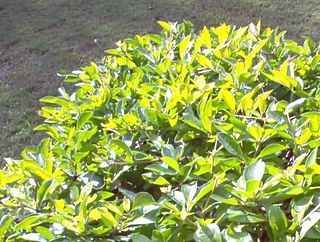 W
WPruning is a horticultural and silvicultural practice involving the selective removal of certain parts of a plant, such as branches, buds, or roots.
 W
WA root trainer container is an aid to the cultivation of young plants and trees in nurseries. Many pot designs train the roots. One example is a truncated plastic cone in which a seedling is planted. There is a drainage hole at the bottom and the main tap root tends to grow towards this.
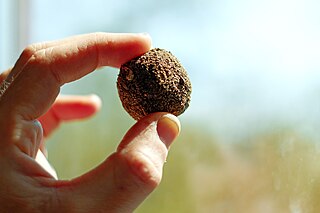 W
WSeed balls, also known as "earth balls" or nendo dango , consist of a variety of different seeds rolled within a ball of clay, preferably volcanic pyroclastic red clay. Various additives may be included, such as humus or compost. These are placed around the seeds, at the center of the ball, to provide microbial inoculants. Cotton-fibres or liquefied paper are sometimes mixed into the clay in order to strengthen it, or liquefied paper mash coated on the outside to further protect the clay ball during sowing by throwing, or in particularly harsh habitats.
 W
WSowing is the process of planting. An area or object that has had seeds planted in it will be described as a sowed area.
 W
WStubble burning is the practice of intentionally setting fire to the straw stubble that remains after grains, such as rice and wheat, have been harvested. The technique was widespread until the 1990s, when governments increasingly restricted its use.
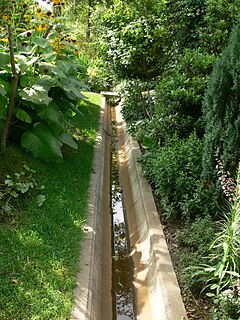 W
WSustainable gardening includes the more specific sustainable landscapes, sustainable landscape design, sustainable landscaping, sustainable landscape architecture, resulting in sustainable sites. It comprises a disparate group of horticultural interests that can share the aims and objectives associated with the international post-1980s sustainable development and sustainability programs developed to address the fact that humans are now using natural biophysical resources faster than they can be replenished by nature.
 W
WIn lawn care, thatch is a layer of organic matter that accumulates on a lawn around the base of the grass plants. Thatch is a combination of living and dead plant matter including crowns, stolons, rhizomes, and roots. Grass clippings do not generally contribute to thatch buildup as they can be easily broken down by soil microorganisms. Thatch is composed of about 25% lignin, a complex organic polymer that is highly resistant to decomposition.
 W
WTree paint, also known as wound dressing, is any substance applied to damaged surfaces of a tree intended to improve its health. It is commonly applied after pruning, or at locations where the tree bark has been damaged.
 W
WThe use of vine training systems in viticulture is aimed primarily to assist in canopy management with finding the balance in enough foliage to facilitate photosynthesis without excessive shading that could impede grape ripening or promote grape diseases. Additional benefits of utilizing particular training systems could be to control potential yields and to facilitate mechanization of certain vineyard tasks such as pruning, irrigation, applying pesticide or fertilizing sprays as well as harvesting the grapes.
 W
WWeed control is the botanical component of pest control, which attempts to stop weeds, especially noxious weeds, from competing with desired flora and fauna including domesticated plants and livestock, and in natural settings preventing non native species competing with native species.